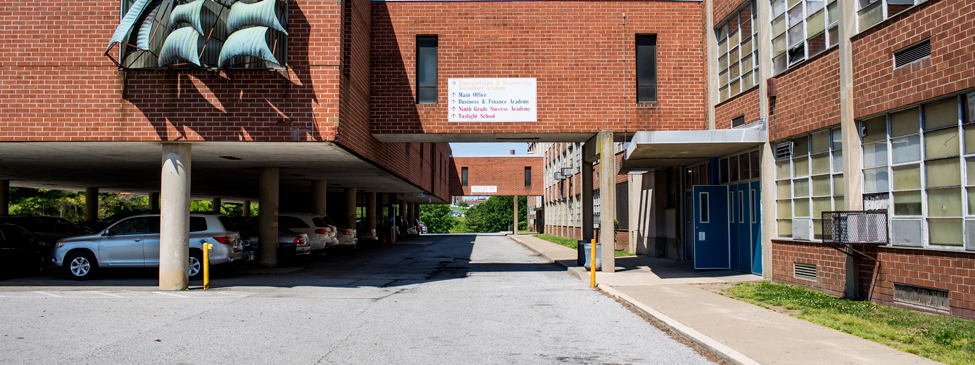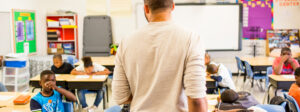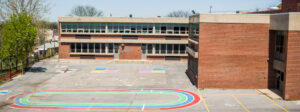For 25 years, Tia Martinez has been an advocate for education reform, the HIV/AIDS epidemic, the war on drugs, homelessness, affordable housing, disconnected youth, immigration, and more. As solving school discipline challenges in schools becomes more important, we sat down with Tia to learn about the economic, political, and social changes in our country responsible for shaping the school-to-prison pipeline and creating high concentrations of under-achieving students in impoverished neighborhoods, towns, and cities.
First, what brought you to this work?
I came of age in the late 80s and 90s. My father was addicted to crack. I had a little sister who was 11 years younger than me, and when she was 25, she took her own life. That loss was happening at the same time the communities I knew were suffering from income inequality, a war on drugs, a crack epidemic, HIV, and more. I wanted to know why.
You talk about major shifts—beginning around 1970—that had a profound effect on our economy and opportunities for people of color. Can you walk us through those?
The first is a huge economic shift that made it hard to find well-paying work for anyone with a high school degree or less. At the same time, a bunch of policies were passed that heavily criminalized a wide swath of non-violent drug offenses. More crimes were felonies and prison sentences were extended. At the same time policing tactics changed. Police forces became increasingly militarized and treated whole neighborhoods as “occupied territory” in which every resident was assumed suspect. “Broken windows” policing became prevalent in mostly black and brown neighborhoods and police proactively enforced minor misdemeanors like drinking in public or riding a bicycle on the sidewalk. This helped fuel a 430 percent increase in the populations of state and federal prisons. We're now the number one incarcerator in the world—by a lot.
We also had a shift around gender and the family. There was a liberating piece: more women moved into the workforce and could support themselves financially and leave abusive men. But if you were a woman of color with a high school degree or less, the disappearance of well-paying jobs meant you and your children were likely consigned to poverty unless you had a partner with a second income. Unfortunately, this became increasingly difficult as huge swaths of men, in particular black men, were disappearing. Those who remained were likely to be mired in long term unemployment because well-paying jobs went away, the probability of being arrested went up, and the chance you were convicted and spent a lot of time in prison went up, too. The chance a woman could find a man who was not incarcerated and employed became increasingly slim, which lead to a sharp increase in poor, single-parent families.
The final change was the emergence of neighborhoods of concentrated poverty. Before the 1970’s we didn’t have neighborhoods that were all black and mostly poor like today. In part because we had legally sanctioned discrimination and black neighborhoods were very integrated in terms of social class: the lawyer lived next door to the construction worker and the waitress. With the passage of housing anti-discrimination laws in the late 1960’s, the black middle class was able to move out of these neighborhoods and leave behind poor families. And when you concentrate folks in poverty—and in this case, multi-generational poverty—in a small geographic place, you concentrate all the things that come with poverty: crime, under-funded schools, and an enormous amount of suffering.
Many people say, “We work in education. We don't have control over poverty, policing, or criminal justice.” So what can we do at the school level to make meaningful change?
I think the first thing is to be conscious of your historical position and how the systems you don't control function. You must realize all these young people have this history in their wiring. To think we can do transformative work without thinking about the worlds they come from defies logic.
You have to realize that for a kid to trust you in the shadow of this structural history of racism and inequality—that’s enormous. We have to earn and build that trust in order to push kids further than they ever thought they could go. We also have to establish a connection to the stuff schools don’t do—things like mental and behavioral health services for families and kids. This means getting comprehensive assessments and getting providers to do the trauma-informed care these kids need.
I think what we absolutely do not want to do—but unfortunately what we have done a lot of—is push the kids that struggle the most out into the streets where the main institution to deal with them is the criminal justice system.
That’s a huge question. How do we disrupt that cycle? What changes do we need to make to how we handle school discipline?
You need to have a system at the school that supports and recognizes great behavior. If everything is about fear, it's not going to work. Changing that is really about relationships. How do you make schools places where powerful relationships between adults and kids happen?
The other thing is to break ties between the criminal justice system and the school system—which means removing police. Arming your school doesn’t work. A police officer’s job is such that normal, obnoxious stuff teenagers do in their presence is an arrestable offense. We also have to think about when a kid is suspended or arrested, how do we make sure they experience a powerful re-entry into the school setting? All of that is intimately tied with teaching and learning.
The most consistent finding is kids who are behind have a huge incentive to act in ways that are going to drive teachers crazy. Because it's better to act a fool and be laughed at by peers than be vulnerable and let folks see you're having real trouble reading. Anything that begins to address both kids who need accelerated learning and the early identification of kids who are behind is central. If that isn't happening—especially in kindergarten through third grade—in a pretty intense way, you have a situation where a kid is in middle school and it’s hard to help.
Any final words?
We have to play the long game if we want to see the change we’re looking for. It took generations to get us where we are. We have to be willing to keep at this work—even when we won’t always get the immediate satisfaction of things like a big one-year jump in test scores. You have to know that if you’re seeing the progress you need to see, you're on your way to something deeper and structural. Alice Walker always said that instead of our 5 or 10 year plan, what we need to do is write our 500 year plan. I think we should get started on that.





